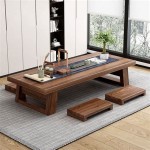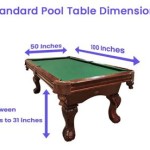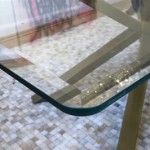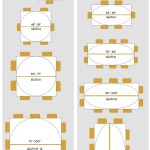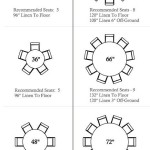Mango Wood and Iron Console Tables: A Study in Design and Functionality
Console tables, versatile pieces of furniture often positioned against walls or in entryways, serve both aesthetic and practical purposes. Among the diverse materials used in their construction, the combination of mango wood and iron has gained considerable popularity. This pairing offers a unique blend of rustic charm and industrial strength, making mango wood and iron console tables a compelling choice for various interior design styles.
Mango wood, sourced from the mango tree (Mangifera indica), is a sustainable option due to its rapid growth and availability as a byproduct of the fruit industry. Once mango trees cease to bear fruit commercially, they are harvested for their wood. This process minimizes deforestation, contributing to a more environmentally conscious approach to furniture production. Iron, on the other hand, known for its durability and malleability, provides a robust framework that complements the natural warmth of the wood.
The synergy between mango wood and iron allows for the creation of console tables that are both visually appealing and structurally sound. The wood's inherent grain patterns and warm tones contrast beautifully with the sleek, often dark, finish of the iron, resulting in a piece that can enhance the ambiance of any room. These tables range in style from minimalist and modern to rustic and industrial, offering a wide array of design choices for consumers.
The Aesthetic Appeal and Design Versatility
Mango wood possesses a distinct character that sets it apart from other hardwoods. Its grain patterns are typically more pronounced and varied, often exhibiting swirling figures and color variations ranging from light golden brown to deeper amber hues. This natural variation ensures that each mango wood console table is unique, adding a touch of individuality to the space it occupies.
The iron components, typically used for the legs, frames, or decorative elements, contribute to the overall aesthetic in several ways. Depending on the design, the iron can be left raw and unpolished, providing a rugged, industrial feel. Alternatively, it can be powder-coated or painted in a variety of colors to match or contrast with the wood, allowing for seamless integration into different interior design schemes. Black iron is a common choice, providing a sophisticated and grounding element, while lighter colors, such as white or grey, can offer a more airy and contemporary look.
The design versatility extends to the shape and size of the console table. Narrow console tables are well-suited for hallways or entryways where space is limited, while wider tables can be used as statement pieces in living rooms or dining areas. The height can also vary, depending on the intended use. Lower console tables can serve as media consoles, while taller ones are more appropriate for displaying decorative items or serving as a makeshift bar.
Furthermore, the addition of features like drawers, shelves, or cabinets enhances the functionality of the console table. Drawers provide concealed storage for smaller items, while shelves offer open display space for books, plants, or artwork. Some designs incorporate both drawers and shelves, maximizing the storage and display possibilities.
Durability and Sustainability Considerations
The combination of mango wood and iron contributes significantly to the durability of the console table. Mango wood, while not as hard as some hardwoods like oak or maple, is still a sturdy and relatively dense material that can withstand everyday use. The iron frame provides structural support, ensuring that the table remains stable and robust over time.
The longevity of a mango wood and iron console table is also enhanced by proper care and maintenance. Regular dusting with a soft cloth helps to prevent the accumulation of dirt and grime. For deeper cleaning, a mild soap solution can be used, followed by thorough drying. Avoiding harsh chemicals and abrasive cleaners is essential to protect the finish of both the wood and the iron.
The sustainability of mango wood as a material is a significant advantage. Unlike some other hardwoods that are sourced from old-growth forests, mango wood is harvested from trees that have reached the end of their fruit-bearing life. This practice reduces the pressure on natural forests and promotes responsible forestry management. Additionally, the use of iron, a readily recyclable material, further contributes to the overall sustainability of the console table.
Consumers increasingly prioritize environmentally friendly products, making mango wood and iron console tables an attractive option. Manufacturers are also adopting sustainable practices, such as using water-based finishes and minimizing waste during the production process, further enhancing the appeal of these tables.
Maintenance and Care for Longevity
Proper maintenance is crucial to preserving the beauty and extending the lifespan of a mango wood and iron console table. The specific care requirements may vary depending on the finish applied to the wood and the iron, but some general guidelines apply.
Dusting regularly with a soft, dry cloth is essential to prevent the buildup of dust and dirt. For deeper cleaning, a mild soap solution can be used, but it is important to avoid harsh chemicals or abrasive cleaners that can damage the finish. Always dry the table thoroughly after cleaning to prevent water damage or rust.
To protect the wood from scratches and dents, use coasters and placemats when placing items on the table's surface. Avoid placing hot or wet items directly on the wood, as this can cause staining or warping. If spills occur, wipe them up immediately to prevent damage to the finish.
The iron components may require occasional cleaning to remove rust or stains. A wire brush can be used to remove loose rust, followed by a rust-inhibiting paint or sealant to prevent further corrosion. For powder-coated or painted iron, a mild soap solution is typically sufficient for cleaning.
Depending on the climate, humidity levels can affect the wood. In dry climates, the wood may shrink, leading to cracks or warping. Humidifiers can help to maintain a stable moisture level in the air. Conversely, in humid climates, the wood may expand, potentially causing joints to loosen. Proper ventilation and dehumidifiers can help to mitigate this issue.
By following these maintenance tips, owners can ensure that their mango wood and iron console table remains a beautiful and functional piece of furniture for many years to come. Regular care and attention will not only preserve the table's aesthetic appeal but also protect its structural integrity, ensuring its longevity.
In summary, mango wood and iron console tables offer a harmonious blend of style, durability, and sustainability. Their aesthetic versatility allows them to complement a wide range of interior design styles, while their robust construction ensures their longevity. Choosing a mango wood and iron console table represents a conscious decision to invest in a piece of furniture that is both beautiful and environmentally responsible.

Ahmadi Industrial Chic Solid Wood And Wrought Iron Console Table Natural Burnt Black

Solid Mango Wood Console Table With Industrial Metal Legs Woodify

Solid Mango Wood Console Table Le Furniture Montreal

Carved Mango Wood Media Console 56 West Elm

Iron Console Table With Mango Wood Shelves 1 Jay C Food S

Solid Mango Wood Console Table With Industrial Metal Legs Woodify

Vidaxl Console Table 46 5 X11 8 X29 Solid Mango Wood Ca

Carved Mango Wood Media Console 56 West Elm

Santa Margherita 52 Mango Wood And Iron Console Table World Interiors

The Urban Port 51 Inch 3 Drawer Mango Wood Console Table Diamond Textured Panels Metal Frame Brown Upt 272552 Beara Com



